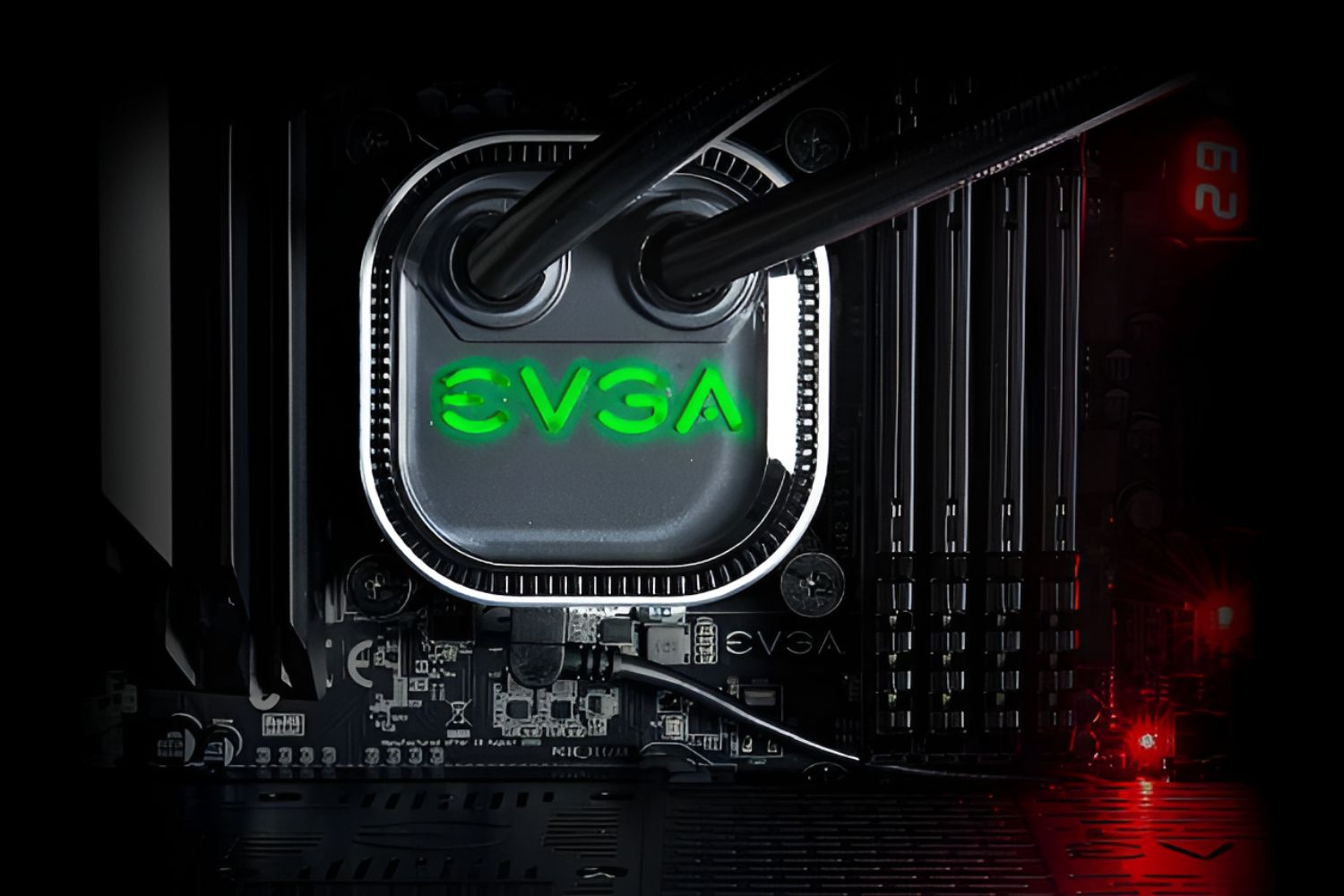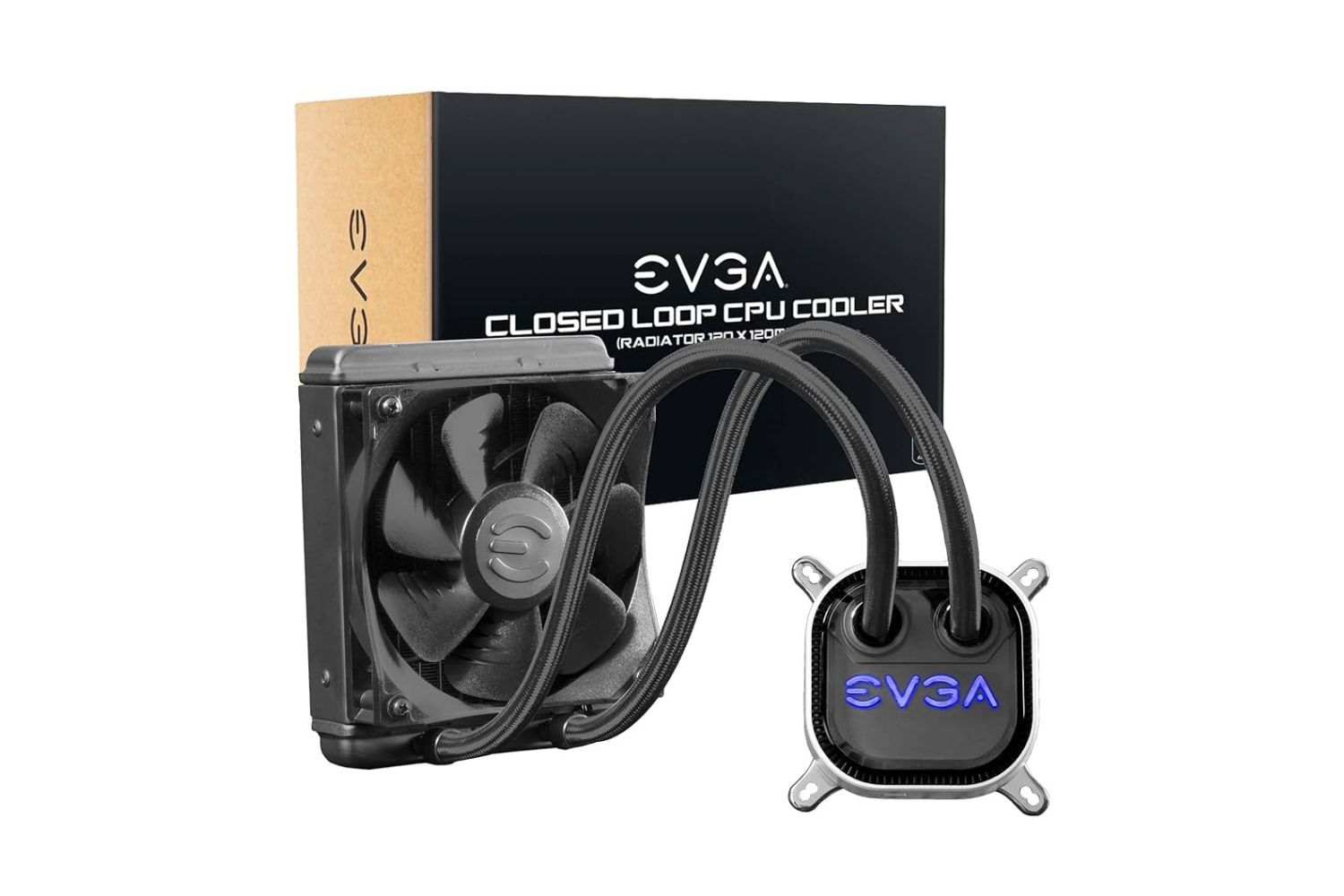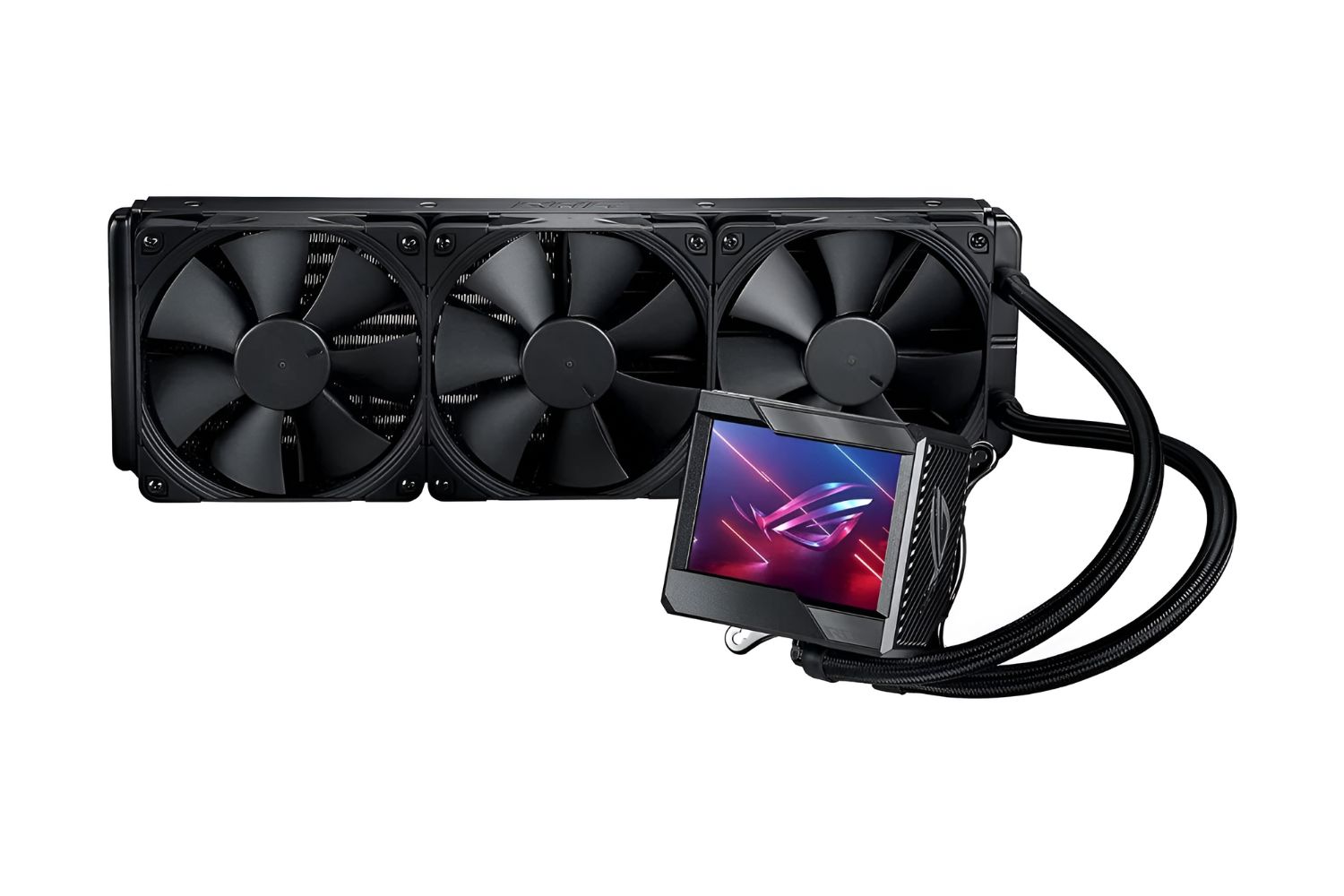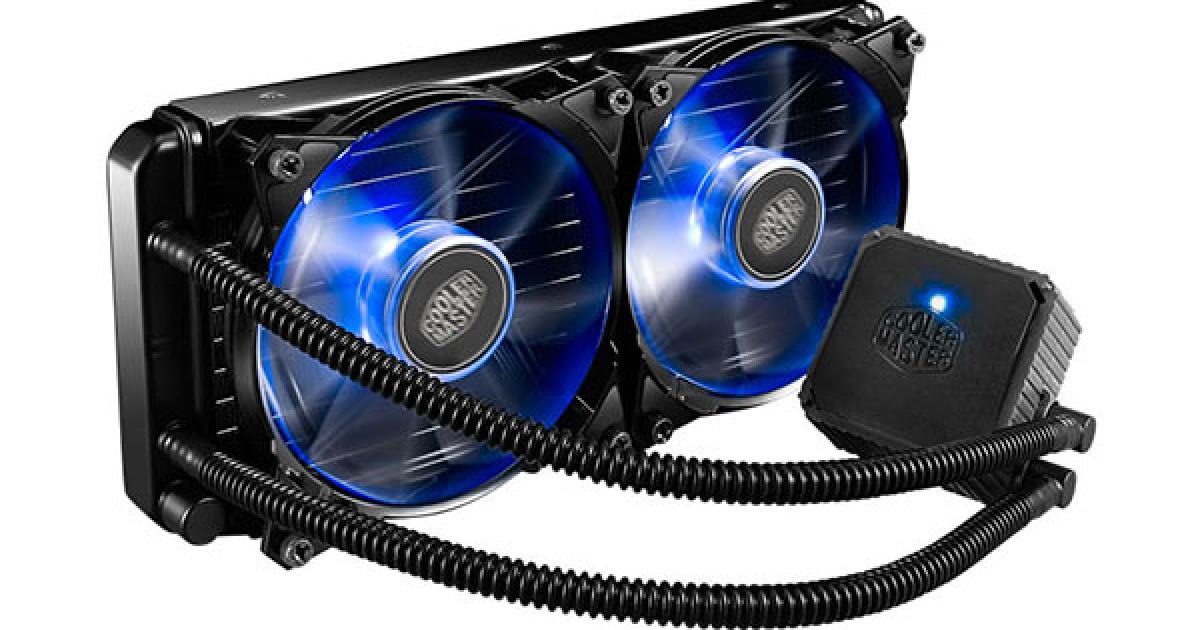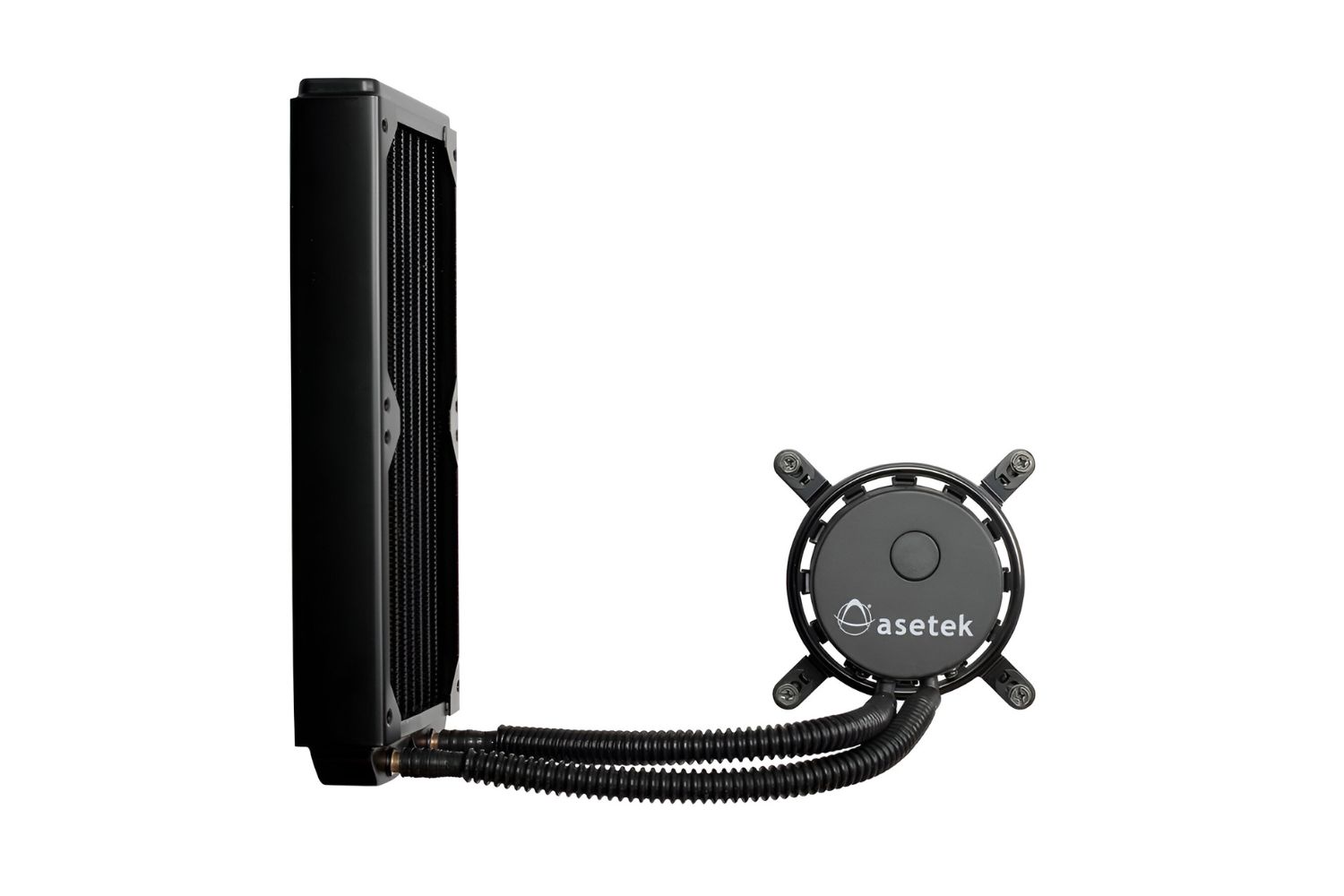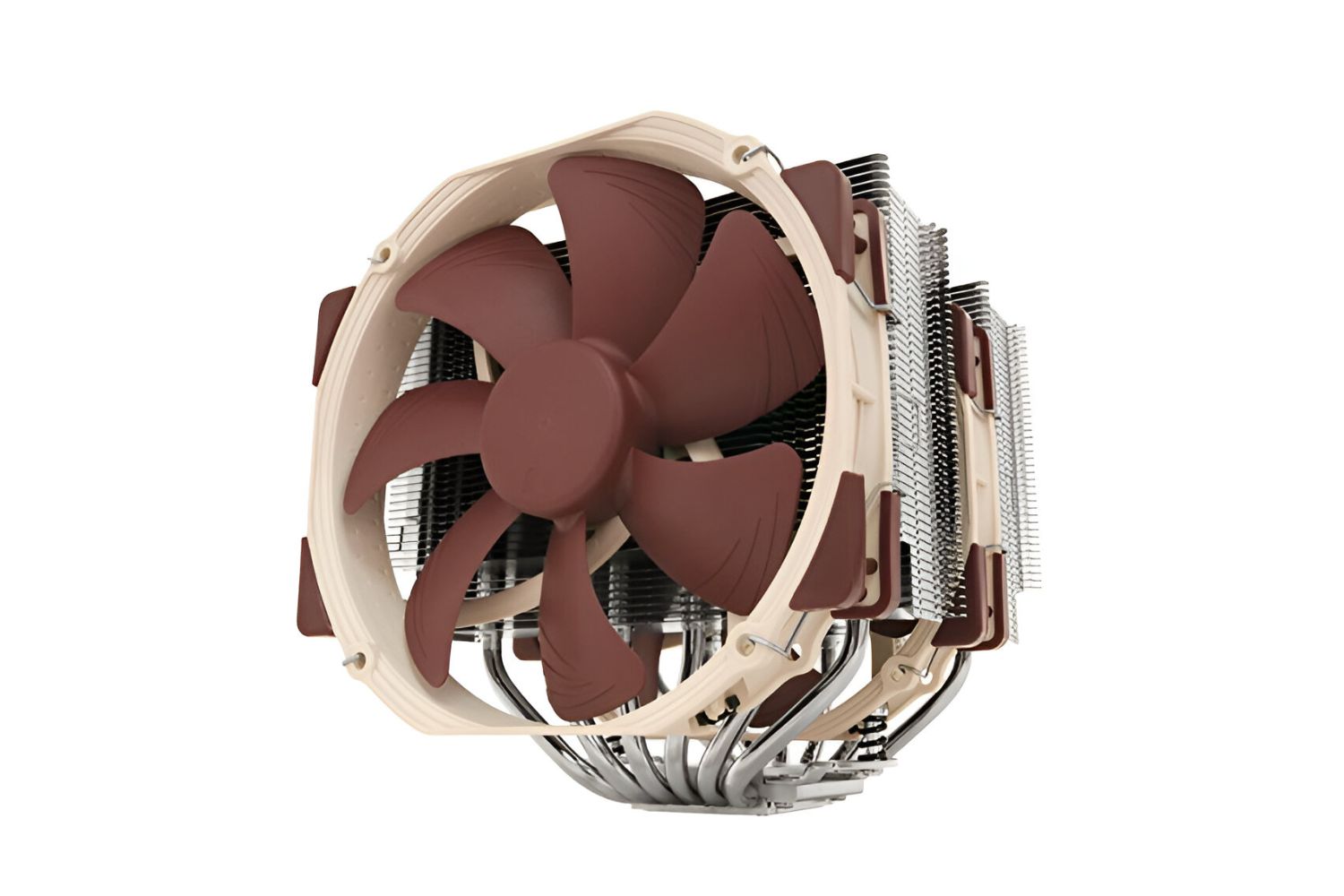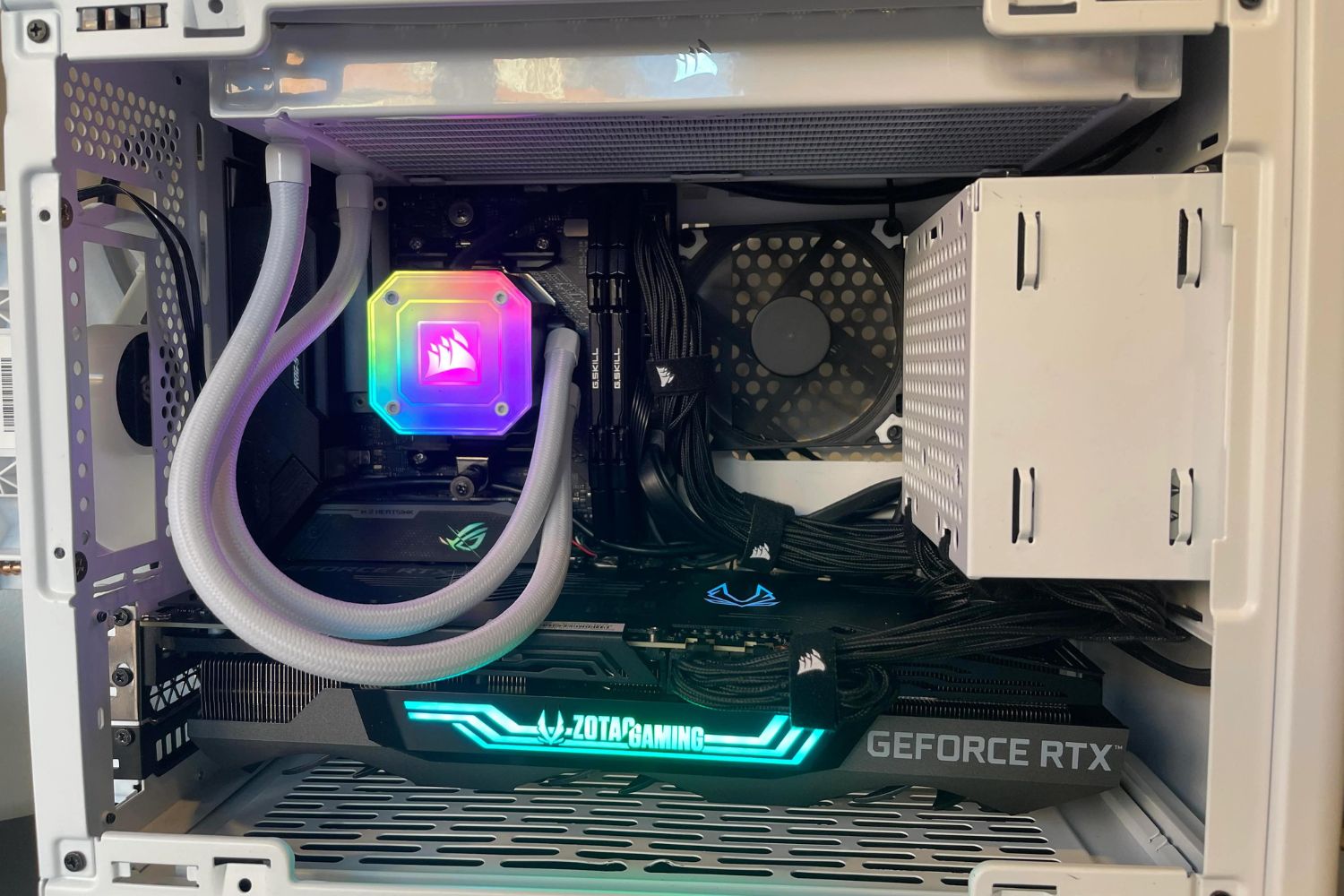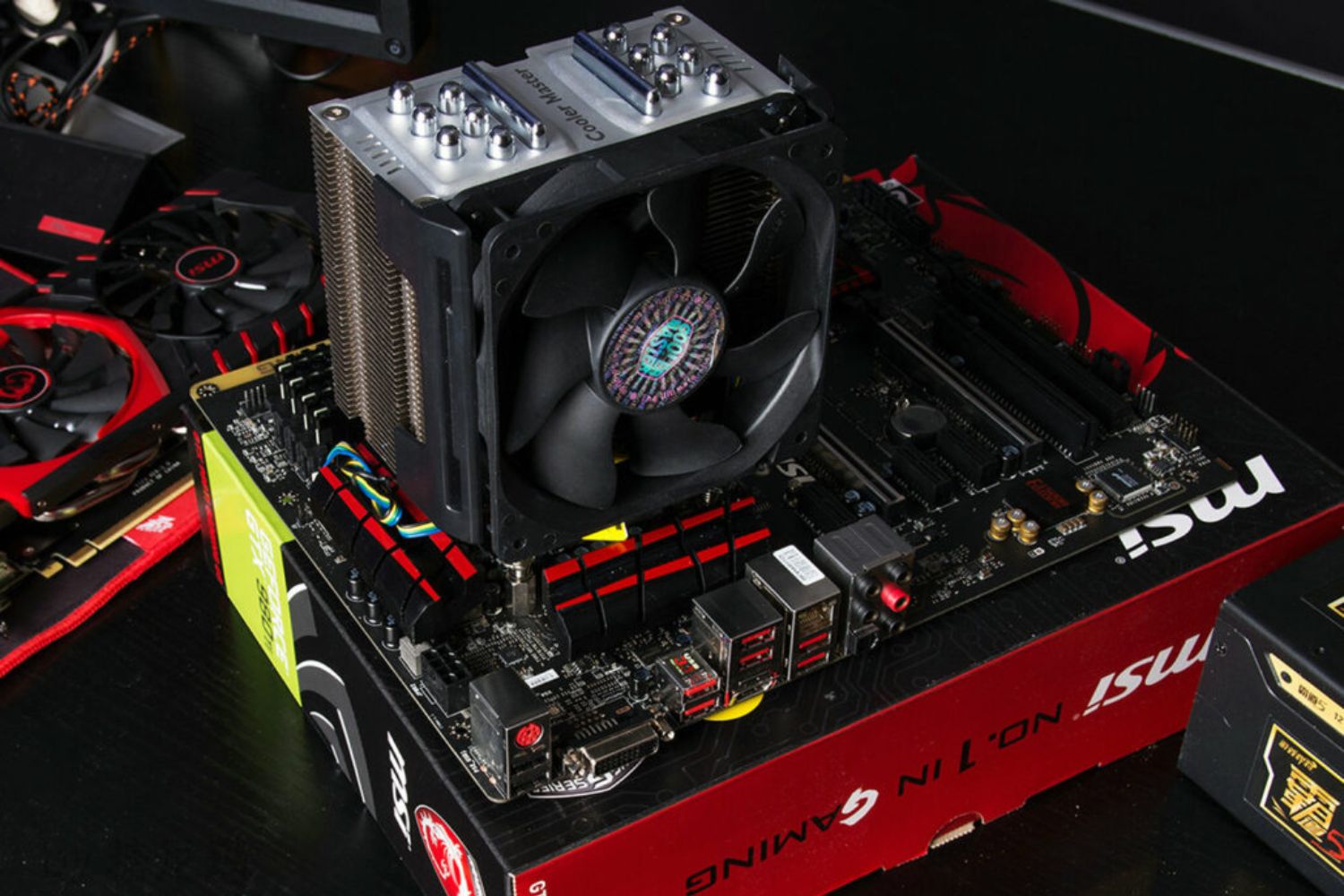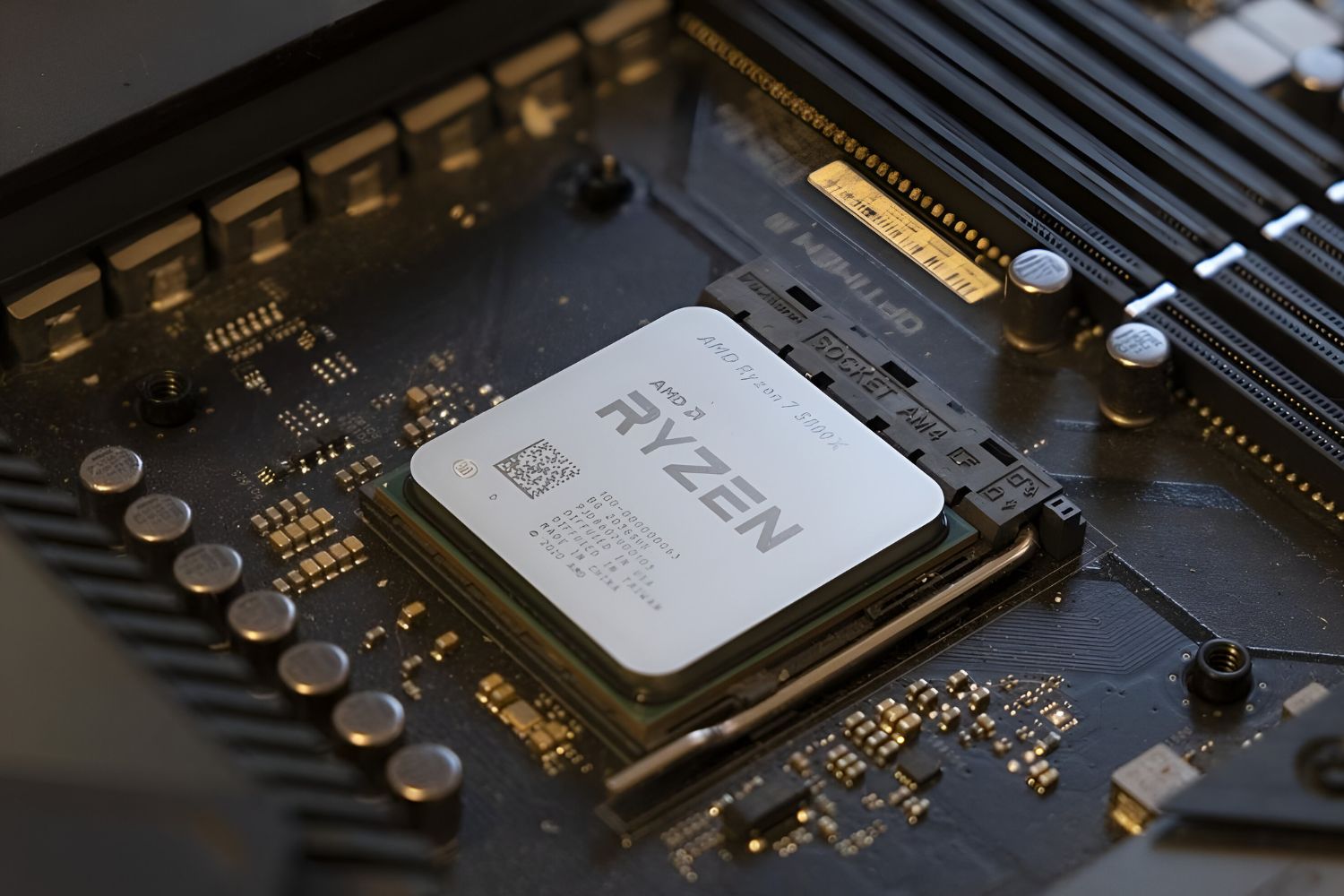Introduction
Welcome to the world of CPU cooling! If you are a tech enthusiast or someone who spends hours on end gaming or running resource-intensive applications on your computer, you know how important it is to keep your CPU cool. Overheating can lead to reduced performance, system instability, and even permanent damage to your valuable hardware.
One popular solution to combat CPU overheating is the use of a CLC CPU cooler. But what exactly is a CLC CPU cooler and how does it work? In this article, we will explore the ins and outs of CLC CPU coolers, discussing their benefits, top brands in the market, installation process, maintenance, and common troubleshooting issues.
A CLC CPU cooler, also known as a Closed-Loop Cooler, is a type of liquid cooling solution designed to effectively dissipate heat generated by the CPU. Unlike traditional air coolers that rely on heat pipes and fans, CLC CPU coolers use a closed-loop system that consists of a pump, radiator, and fans to transfer heat away from the CPU and keep it at optimal operating temperatures.
The primary purpose of a CLC CPU cooler is to provide efficient and reliable cooling for the CPU, ensuring that it can perform at its best without overheating. By utilizing liquid cooling technology, CLC CPU coolers have the potential to deliver superior cooling performance compared to air coolers, particularly for overclocked CPUs or systems with high-power components.
Now that we have a basic understanding of what a CLC CPU cooler is, let’s delve deeper into how it works and the benefits it brings. By the end of this article, you will have all the knowledge you need to make an informed decision when it comes to selecting and using a CLC CPU cooler for your system.
What is a CLC CPU Cooler?
A CLC CPU cooler, which stands for Closed Loop Cooler, is a type of cooling solution designed specifically for central processing units (CPUs) in computers. It is a liquid cooling system that utilizes a closed loop to transfer heat away from the CPU and maintain optimal operating temperatures. This type of cooler is considered to be more efficient and effective than traditional air coolers.
The closed-loop design of a CLC CPU cooler consists of three main components: a pump, a radiator, and fans. The pump circulates a special coolant that absorbs heat from the CPU. The heated coolant then flows through the radiator where the heat is dissipated into the surrounding air with the help of fans. The cooled coolant is then pumped back to the CPU to repeat the cycle.
Compared to air coolers, CLC CPU coolers can provide much better heat dissipation capabilities. The liquid coolant used in CLC coolers has higher thermal conductivity compared to air, allowing it to absorb more heat from the CPU. Additionally, the radiator and fans work together to efficiently dissipate this heat, ensuring that the CPU remains within its optimal temperature range.
One of the key advantages of using a CLC CPU cooler is its ability to handle high thermal loads. This makes it particularly useful for systems with overclocked CPUs or for users who engage in resource-intensive tasks such as gaming, video editing, or 3D rendering. By effectively dissipating heat, a CLC cooler helps prevent thermal throttling and ensures that the CPU runs at its peak performance for longer periods.
Another benefit of CLC CPU coolers is their compact form factor. Unlike large air coolers that can take up a significant amount of space inside a computer case, CLC coolers are usually much smaller and utilize a closed-loop design. This allows for greater flexibility in terms of installation and compatibility with different computer case sizes.
Overall, a CLC CPU cooler is a reliable and efficient cooling solution for CPUs, offering superior heat dissipation capabilities compared to traditional air coolers. Its closed-loop design, combined with high-quality components, ensures that the CPU remains cool even under heavy loads, thereby contributing to system stability and longevity.
How does a CLC CPU Cooler work?
A CLC CPU cooler, or Closed Loop Cooler, operates on the principles of liquid cooling to effectively dissipate heat generated by the CPU. The closed-loop design of a CLC CPU cooler consists of three main components: a pump, a radiator, and fans. Let’s take a closer look at how each component works together to keep the CPU cool.
The pump is responsible for circulating a specialized coolant within the closed loop of the cooler. The coolant absorbs heat from the CPU through direct contact with a cold plate. This cold plate is installed on top of the CPU, ensuring efficient heat transfer. As the coolant absorbs heat, it becomes warmer and is transported away from the CPU.
Once the heated coolant reaches the radiator, it releases the accumulated heat into the surrounding air. The radiator consists of thin metal fins that increase the surface area exposed to air. This, combined with the airflow generated by the fans, helps to effectively dissipate the heat. As the coolant releases heat, it cools down and prepares to cycle back to the CPU.
The fans play a crucial role in the heat dissipation process. They are strategically positioned in front of the radiator and generate airflow, drawing cool air from outside the case and pushing it through the fins. This airflow carries away the heat from the hot coolant, aiding in the cooling process.
What sets CLC CPU coolers apart from other liquid-cooled solutions is their self-contained nature. Unlike custom liquid cooling systems that require separate reservoirs, pumps, and tubing, CLC coolers come pre-filled and sealed from the factory. This makes them easier to install and maintain.
Furthermore, CLC CPU coolers typically have a closed loop that prevents coolant evaporation and eliminates the need for manual refilling or maintenance. The closed-loop system also reduces the risk of leaks, making CLC coolers a safer option for users.
The effectiveness of a CLC CPU cooler depends on various factors, including the quality of its components, the size of the radiator, and the airflow generated by the fans. It’s important to choose a CLC cooler that matches the thermal requirements of your CPU and offers sufficient cooling capacity.
Overall, a CLC CPU cooler operates by circulating coolant through a closed loop, which absorbs and dissipates heat from the CPU. The pump, radiator, and fans work together to ensure efficient heat transfer and keep the CPU operating at optimal temperatures.
Benefits of using a CLC CPU Cooler
Using a CLC CPU cooler, or Closed Loop Cooler, offers several benefits that make it a popular choice among PC enthusiasts and gamers. Let’s explore the advantages of incorporating a CLC CPU cooler into your system.
1. Efficient Heat Dissipation: CLC CPU coolers are designed to provide enhanced cooling performance compared to traditional air coolers. The liquid cooling technology used in CLC coolers allows for more efficient heat dissipation, keeping your CPU operating at optimal temperatures even under heavy workloads or overclocking scenarios.
2. Noise Reduction: CLC CPU coolers are often quieter than air coolers. The fans in a CLC cooler can operate at lower speeds while still maintaining effective cooling. This results in reduced noise levels, creating a quieter computing environment suitable for both work and entertainment.
3. Compact Design: CLC coolers are generally more compact than bulky air coolers. Their closed-loop design and the absence of large heat sinks and towers make them ideal for small form factor builds. This allows for greater flexibility when it comes to choosing a computer case and optimizing space inside your system.
4. Enhanced Overclocking: CLC CPU coolers are especially beneficial for users who want to push their CPUs beyond stock speeds. The improved heat dissipation capabilities of CLC coolers ensure that your CPU remains stable and performs optimally even at higher clock speeds. This allows for more efficient and powerful overclocking potential.
5. Longevity and Stability: By keeping your CPU temperatures in check, CLC CPU coolers contribute to the longevity and stability of your system. Overheating can lead to performance degradation and reduce the lifespan of your CPU. With a CLC cooler, you can maintain optimal temperatures, prolonging the life of your CPU and other sensitive components.
6. Easy Installation and Maintenance: CLC coolers are typically easy to install, even for users with limited technical knowledge. They often come with pre-filled coolant, making it a hassle-free installation process. Additionally, CLC coolers require minimal maintenance, as the closed-loop design eliminates the need for coolant refills or tubing adjustments.
7. Sleek Aesthetics: CLC coolers add a touch of modern aesthetic appeal to your system. Their compact design and the absence of large heat sinks provide a cleaner and more streamlined look, allowing you to showcase other components and RGB lighting in your build.
Overall, CLC CPU coolers offer efficient heat dissipation, reduced noise levels, compatibility with small form factor builds, enhanced overclocking capabilities, system longevity, easy installation, and a visually appealing design. Investing in a high-quality CLC CPU cooler can significantly improve the performance and reliability of your system.
Top CLC CPU Cooler Brands in the Market
When it comes to choosing a CLC CPU cooler for your system, it’s essential to opt for a trusted and reputable brand that offers reliable performance and quality. Here are some of the top CLC CPU cooler brands that have established themselves in the market:
1. Corsair: Corsair is a well-known brand in the PC cooling industry, offering a wide range of CLC CPU coolers. Their coolers are known for their excellent cooling performance, quiet operation, and sleek aesthetics. Corsair’s Hydro Series and iCUE series are highly regarded among PC enthusiasts.
2. NZXT: NZXT is another popular brand that offers high-quality CLC CPU coolers. Their coolers, including the Kraken series, feature robust construction, efficient cooling capabilities, and customizable RGB lighting. NZXT’s CAM software provides intuitive control over fan speeds, pump speeds, and various lighting effects.
3. Cooler Master: Cooler Master has a strong presence in the cooling market, and their CLC CPU coolers are known for their exceptional performance and durability. The MasterLiquid series from Cooler Master offers a range of options for different budgets and requirements, delivering efficient cooling and low noise levels.
4. Deepcool: Deepcool is a brand that has gained popularity in recent years for its reliable and affordable CLC CPU coolers. Their GamerStorm series, such as the Castle and Captain models, provide excellent cooling performance, sleek designs, and user-friendly installation.
5. EVGA: EVGA, primarily known for its graphics cards, also offers high-quality CLC CPU coolers. The EVGA CLC coolers feature robust construction, reliable performance, and easy installation. They’re known for their exceptional cooling capabilities, making them a solid choice for overclocking enthusiasts.
6. Thermaltake: Thermaltake is a brand that offers a variety of CLC CPU coolers suitable for different needs and budgets. Their Water 3.0 series and Floe Riing series provide efficient cooling, customizable RGB lighting, and user-friendly installation. Thermaltake’s coolers are known for their solid performance and value for money.
7. Be Quiet!: Be Quiet! is a brand that focuses on delivering silent cooling solutions. Their Shadow Rock and Dark Rock series offer air and CLC CPU coolers that excel in noise reduction without compromising on cooling performance. Their coolers are ideal for users who prioritize a whisper-quiet computing environment.
These are just a few of the top CLC CPU cooler brands available in the market. Each brand mentioned above offers a range of options with different features and price points. It is essential to consider factors like budget, compatibility, cooling performance, and noise levels to make an informed decision when choosing the right CLC CPU cooler for your system.
Factors to consider when choosing a CLC CPU Cooler
When selecting a CLC CPU cooler, there are several important factors to consider to ensure compatibility, optimal cooling performance, and value for money. Here are some key factors to keep in mind:
1. CPU Compatibility: Before purchasing a CLC CPU cooler, ensure that it is compatible with your specific CPU socket type. Common socket types include Intel LGA and AMD AM4. Check the manufacturer’s specifications to ensure a proper fit.
2. TDP Rating: Consider the Thermal Design Power (TDP) rating of your CPU, which indicates the amount of heat it generates. Choose a CLC CPU cooler with a TDP that is sufficient to handle your CPU’s heat output for optimal cooling performance.
3. Radiator Size: The size of the radiator directly impacts the cooling capacity of your CLC CPU cooler. Larger radiators typically have more surface area for better heat dissipation. Consider your PC case’s compatibility and available space when selecting a radiator size.
4. Fan Speed and Noise Levels: Take into account the fan speed and noise levels of the CLC CPU cooler. Higher fan speeds generally lead to better cooling performance, but it can also result in increased noise. Look for coolers that strike a balance between cooling capability and noise levels that suit your preferences.
5. Build Quality and Durability: Invest in a CLC CPU cooler from a reputable brand known for its build quality and durability. Look for features like high-quality materials, sturdy construction, and reliable components to ensure long-term performance and reliability.
6. Pump Reliability: The pump is a crucial component of a CLC CPU cooler. Choose coolers that have reliable and efficient pumps to ensure proper coolant circulation and minimize the risk of pump failure.
7. Software Control and Customization: Consider whether the CLC CPU cooler comes with software control that allows you to adjust fan speeds, pump speed, and RGB lighting effects. Having control over these features can enhance your cooling performance and aesthetic customization.
8. Price and Value: Set a budget for your CLC CPU cooler and compare prices among different brands. Look for coolers that offer a balance of features, performance, and price to ensure you are getting the best value for your money.
9. Warranty and Customer Support: Check the warranty length and the brand’s reputation for customer support. A longer warranty period and responsive customer support can provide peace of mind and assist you in case of any issues or concerns.
By considering these factors, you can choose a CLC CPU cooler that fits your requirements, offers optimal cooling performance, and provides a reliable and durable cooling solution for your CPU.
Installation process of a CLC CPU Cooler
Installing a CLC CPU cooler, or Closed Loop Cooler, may seem intimidating at first, but with the right tools and a step-by-step approach, it can be a straightforward process. Here is a general guide on how to install a CLC CPU cooler:
1. Preparing the Case: Start by ensuring that your computer is powered off and unplugged. Open the computer case and locate the CPU socket on the motherboard. Remove any existing cooler or bracket if necessary.
2. Applying Thermal Paste: Before installing the CLC cooler, apply a small amount of thermal paste onto the center of the CPU. This helps to facilitate better heat transfer between the CPU and the cooler.
3. Mounting the Backplate: Attach the backplate that comes with the CLC cooler to the rear of the motherboard. This backplate provides support and helps secure the cooler in place. Follow the instructions provided by the manufacturer for the specific mounting mechanism.
4. Mounting the Pump/Cold Plate: Place the pump or cold plate of the CLC cooler onto the CPU. Align the mounting holes or brackets with the holes on the backplate and secure them in place. Use the provided screws or brackets and ensure that they are tightened evenly.
5. Mounting the Radiator and Fans: Install the radiator in a suitable location inside the computer case. It is often mounted on the front or top panel, but the specific location may depend on the case design. Secure the radiator using the provided screws or mounting brackets.
6. Connecting the Fans and Pump: Connect the fans to the radiator using the supplied fan cables. Insert the pump power cable into the CPU fan header on the motherboard. Some CLC coolers may also have additional cables for RGB lighting or control features. Ensure that all connections are secure.
7. Connecting the Pump to Power: Connect the pump’s power cable to a suitable power source. Most CLC coolers require a SATA power connector or a 3-pin fan connector. Refer to the manufacturer’s instructions for the specific requirements.
8. Cable Management and Reassembly: Route the cables neatly and secure them using cable ties or clips. Close the computer case and ensure that all connections are properly seated.
9. Testing and Monitoring: Power on your computer and check if the CLC cooler is functioning correctly. Enter the BIOS or use a monitoring software to check the CPU temperature and ensure that it is within acceptable ranges.
It is important to note that the installation process may vary slightly depending on the specific CLC CPU cooler model and your computer’s configuration. Always refer to the manufacturer’s instructions and follow any specific guidelines provided.
Remember, if you are unsure about any step of the installation process, it is recommended to seek assistance from a professional or consult the manufacturer’s support team.
Maintenance and Cleaning of a CLC CPU Cooler
Proper maintenance and regular cleaning of your CLC CPU cooler, or Closed Loop Cooler, are essential to ensure its optimal performance and longevity. Here are some guidelines to help you maintain and clean your CLC CPU cooler:
1. Regular Dust Removal: Over time, dust can accumulate on the cooler’s radiator and fans, reducing their effectiveness. Regularly clean the radiator and fans using compressed air or a soft brush to remove the dust buildup. Be gentle to avoid damaging any components.
2. Check Fan Operation: Monitor the fan operation to ensure that all fans are working properly. When cleaning or inspecting, make sure the fans spin freely and are not obstructed by any debris. If a fan is not functioning correctly, consider replacing it to prevent overheating issues.
3. Inspect for Leaks: Check for any signs of coolant leakage. Look for damp spots, discoloration, or corrosion around the pump and tubing. If you notice any leaks, immediately address the issue by contacting the manufacturer or seeking professional assistance.
4. Clean Pump and Cold Plate: Gently wipe the pump and cold plate with a lint-free cloth to remove any dust or residue. Take care to avoid applying excessive pressure, as this could damage the components. Avoid using any fluids directly on the pump or cold plate.
5. Check Coolant Level: Some CLC coolers have a transparent window or indicator to monitor the coolant level. Ensure that the coolant level is within the manufacturer’s recommended range. If it is low, contact the manufacturer for guidance, as adding coolant may require specific procedures.
6. Monitor Pump Noise: Pay attention to any abnormal noises coming from the pump. If you notice an unusual or loud noise, it could be a sign of a problem with the pump. In such cases, contact the manufacturer’s support team for guidance on troubleshooting and potential solutions.
7. Keep Surrounding Area Clean: Maintain a clean and dust-free environment around the CLC CPU cooler. This includes ensuring good airflow within the computer case and keeping the surroundings free from excessive dust or debris.
8. Follow Manufacturer’s Guidelines: It’s crucial to follow the specific maintenance guidelines provided by the manufacturer. They may have additional recommendations or instructions tailored to their particular CLC CPU cooler model.
Regular maintenance and cleaning will help keep your CLC CPU cooler operating at peak performance and prolong its lifespan. By ensuring that the cooler remains free from dust, coolant leakage, and mechanical issues, you can enjoy efficient cooling and a stable operating environment for your CPU.
Common Issues and Troubleshooting of CLC CPU Coolers
While CLC CPU coolers, or Closed Loop Coolers, are generally reliable and efficient, some common issues may arise during their usage. Understanding these issues and knowing how to troubleshoot them can help you maintain the optimal performance of your CLC CPU cooler. Here are some common issues and troubleshooting steps:
1. High CPU Temperatures: If you notice unusually high CPU temperatures, it could indicate insufficient cooling from the CLC CPU cooler. Start by checking if the fans are functioning properly and the radiator isn’t clogged with dust. Ensure that the cooler is properly installed and making good contact with the CPU.
2. Noisy Pump or Fans: If you hear excessive noise coming from the pump or fans, it could be due to air bubbles or a mechanical issue. Make sure that the CLC cooler is mounted securely and that the pump is receiving sufficient power. If the noise persists, consider contacting the manufacturer’s support for further assistance.
3. Coolant Leakage: Coolant leakage can lead to system damage and reduced performance. If you notice any signs of leakage, such as damp spots or discoloration, immediately disconnect the cooler and contact the manufacturer for guidance. Attempting to fix the leakage yourself could void the warranty or potentially cause further damage.
4. Pump Failure: In some cases, the pump of the CLC cooler may fail to operate, resulting in inadequate cooling. Check if the pump is receiving power and is properly connected. If the pump still doesn’t function, it may require replacement. Contact the manufacturer for troubleshooting steps or to initiate a warranty claim.
5. Incompatible Mounting Hardware: Compatibility issues can occur if the CLC cooler’s mounting hardware doesn’t align with your CPU socket. Ensure that you have selected the correct mounting components for your specific CPU socket type. If compatibility issues persist, contact the manufacturer for guidance or alternative options.
6. Software and Control Issues: Some CLC CPU coolers come with software control for fan speeds, pump speeds, and RGB lighting effects. If you experience issues with software functionality or control, ensure that you are using the latest version of the software provided by the manufacturer. If problems persist, reach out to their support team for assistance.
7. Fan Speed Fluctuations: If the CLC cooler’s fans are randomly fluctuating in speed, it could be due to improper fan control settings. Check your system’s BIOS or the manufacturer’s software to ensure that the fan speed settings are configured correctly. Adjust the settings as needed to maintain a balance between cooling performance and noise levels.
8. Limited Overclocking Potential: If you are overclocking your CPU and notice limitations in stability or temperatures, it could indicate that your CLC cooler may not have sufficient cooling capacity for the increased heat output. Consider upgrading to a more powerful CLC cooler with a higher cooling capacity to accommodate the overclocked settings.
If you encounter any issues with your CLC CPU cooler that you are unable to resolve, it is recommended to reach out to the manufacturer’s support team or seek assistance from an experienced professional. They can provide specific troubleshooting steps and solutions tailored to your CLC cooler model and situation.
Conclusion
A CLC CPU cooler, or Closed Loop Cooler, is an effective and efficient cooling solution for your CPU. With its liquid cooling technology and closed-loop design, it provides superior heat dissipation compared to traditional air coolers. CLC CPU coolers offer benefits such as efficient heat dissipation, reduced noise levels, compatibility with small form factor builds, enhanced overclocking capabilities, system longevity, easy installation, and sleek aesthetics.
When choosing a CLC CPU cooler, consider factors such as CPU compatibility, TDP rating, radiator size, fan speed and noise levels, build quality, pump reliability, software control, and price. By making an informed decision and selecting a reputable brand that meets your requirements, you can ensure optimal cooling performance for your CPU.
During the installation process, follow the manufacturer’s guidelines and steps to correctly mount the cooler, connect the components, and test its operation. Regular maintenance and cleaning are crucial to keep your CLC CPU cooler performing at its best. This includes removing dust, checking for leaks, cleaning the pump and cold plate, and monitoring fan operation.
Common issues with CLC CPU coolers include high CPU temperatures, noisy pumps or fans, coolant leakage, pump failure, incompatible mounting hardware, software and control issues, fan speed fluctuations, and limitations in overclocking potential. Troubleshooting these issues involves checking connections, adjusting settings, ensuring compatibility, and contacting the manufacturer’s support when necessary.
In conclusion, a CLC CPU cooler is an excellent investment for individuals seeking superior cooling performance, reduced noise levels, and enhanced overclocking capabilities for their CPUs. By selecting a reliable brand, following proper installation and maintenance procedures, and addressing any issues that may arise, you can enjoy efficient and reliable cooling for your CPU, ensuring optimal performance and longevity for your system.







